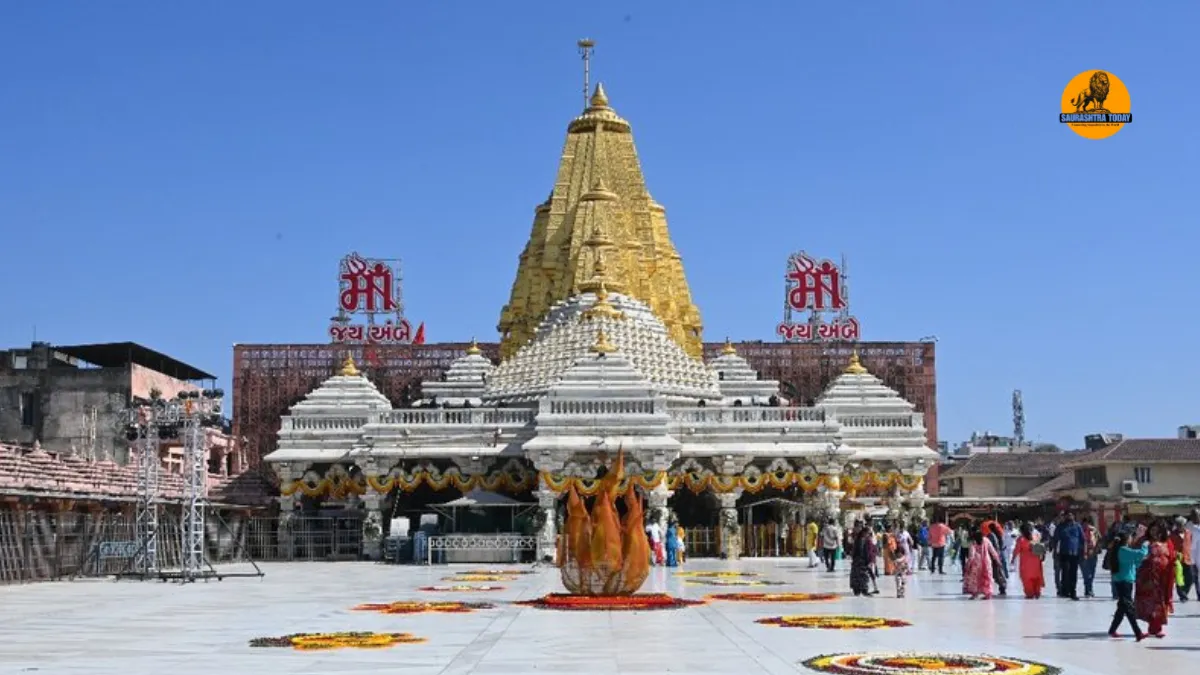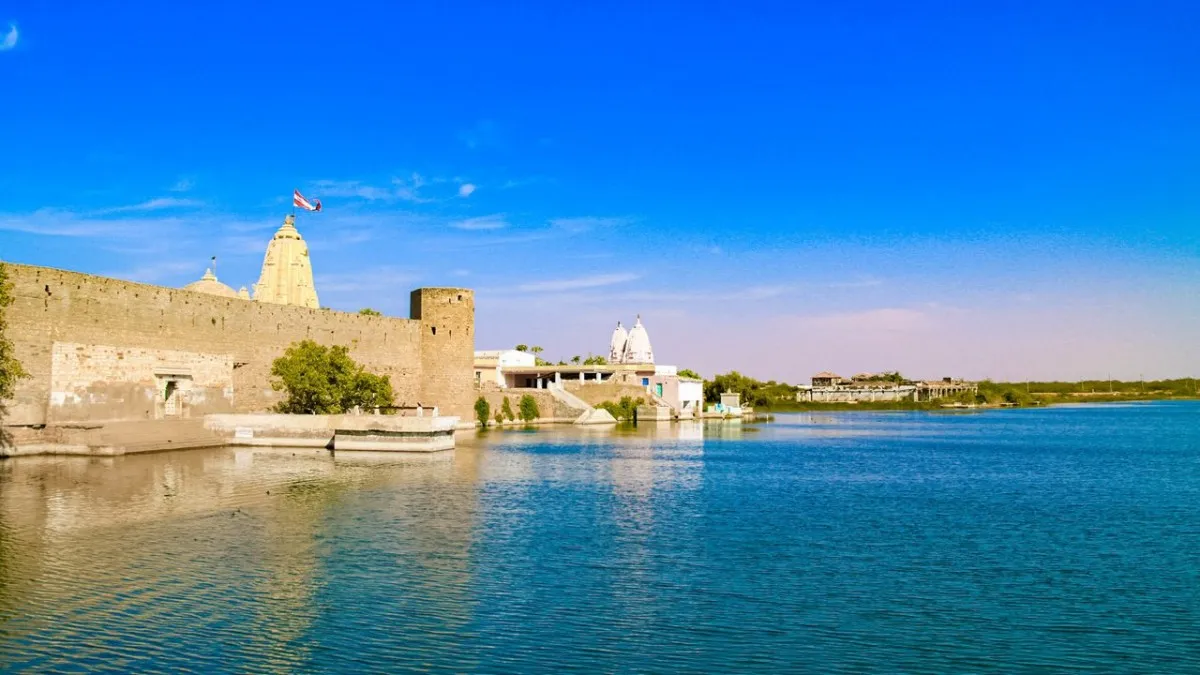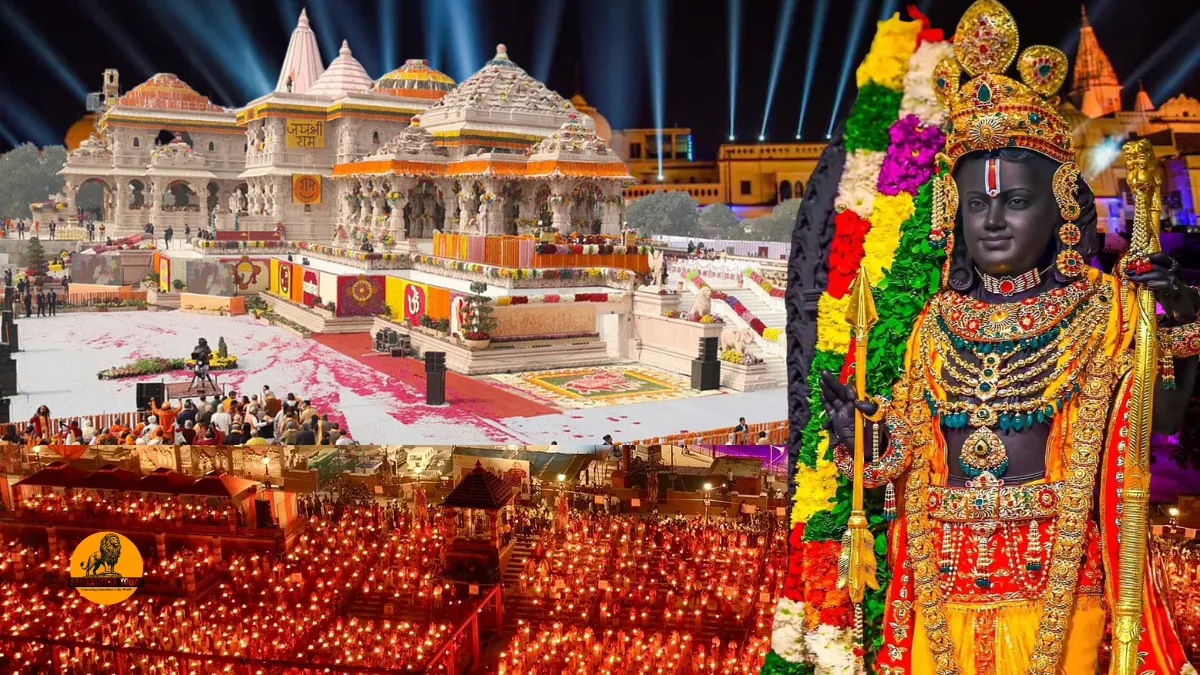Ambaji Temple, located on Gabbar Hill in Gujarat, is one of India’s most revered Shakti Peeths. Dedicated to Maa Amba, the temple has achieved immense religious and cultural significance. Thousands of devotees from across India visit Ambaji every year, drawn by the divine presence of the Goddess and the temple’s historical importance. Ambaji is believed to house a part of Goddess Sati’s body, which fell here after her body shattered following Lord Shiva’s Tandava. For worshippers of Shakti, devotees of Tantric Vidya, and devout Hindus, Ambaji Temple holds unparalleled spiritual significance.
The temple’s architecture is equally captivating. A harmonious blend of pristine marble and intricate gold plating gives it a majestic appearance, reflecting both devotion and artistry. Visitors often marvel at the temple’s serene atmosphere, which is conducive to meditation and spiritual connection.
Why Knowing Ambaji Temple Darshan Timings is Important
For anyone planning a visit, knowing the Ambaji Temple Darshan Timings is crucial. The temple is extremely popular, and thousands of devotees arrive daily. Without prior knowledge of the timings, visitors may end up waiting outside the temple gates for hours. Arriving early not only saves time but also ensures a peaceful Darshan, as the crowd tends to increase significantly as the day progresses.
Moreover, certain special occasions, such as Purnima (full moon) festivals, attract even larger gatherings. On Badarvi Purnima, for example, a grand fair is held in front of the temple, drawing devotees from far and wide. Visiting on such days requires careful planning, making it essential to be aware of the temple’s timings.
Travel to Ambaji is relatively convenient due to its proximity to major cities and tourist destinations. Cities like Palampur, Mount Abu, Ahmedabad, and Kaliyadra are well-connected by road, making the temple accessible for day trips or longer pilgrimages.
Darshan and Aarti at Ambaji Temple
The Darshan of Amba Maa Yantra is the primary ritual for devotees. The temple opens early in the morning and remains accessible for a few hours, though timings can vary on special occasions according to the Hindu calendar.
A significant highlight of the day is the Morning Aarti, conducted daily at 6:00 A.M. This ritual is an essential spiritual experience for visitors, offering a glimpse into the temple’s devotional practices. The Aarti is accompanied by traditional chants and the ringing of bells, creating a deeply immersive atmosphere.
Ambaji Temple Darshan Timings
The Ambaji Temple Darshan Timings vary slightly according to the season. Below is a detailed guide for each season:
Summer Timings
- Morning Darshan: 7:00 A.M to 10:45 A.M
- Afternoon Darshan: 12:30 P.M to 4:30 P.M
- Evening Darshan: 7:30 P.M to 9:15 P.M
Monsoon Timings
- Morning Darshan: 7:00 A.M to 11:30 A.M
- Afternoon Darshan: 12:30 P.M to 4:30 P.M
- Evening Darshan: 7:00 P.M to 9:00 P.M
Winter Timings
- Morning Darshan: 7:00 A.M to 11:30 A.M
- Afternoon Darshan: 12:30 P.M to 4:00 P.M
- Evening Darshan: 6:00 P.M to 8:30 P.M
It is recommended that visitors plan their visit according to the season and choose the early Darshan slots for a more serene experience.
Also read: History of Ambaji Temple – Significance, Legends, and Sacred Heritage
Special Festivals and Events
Ambaji Temple is known for its vibrant festivals, which are celebrated with grandeur and devotion. Some key events include:
- Badarvi Purnima: Celebrated on the full moon day of the Hindu month, this festival attracts thousands of pilgrims. A grand fair is organized outside the temple, featuring local crafts, food stalls, and cultural performances.
- Navratri Festival: Navratri is a nine-night celebration dedicated to Goddess Amba. Devotees participate in rituals, music, and dance, making it one of the most lively periods to visit the temple.
- Annakoot Celebrations: Special Annakoot days mark the offering of a large variety of food items to the Goddess, followed by communal prayers and rituals. The Darshan timings during these days may vary slightly, so visitors are advised to check in advance.
These festivals not only highlight the spiritual importance of Ambaji Temple but also offer a glimpse into the rich cultural traditions of Gujarat.
Also read: Ashapura Mata Madh History: The Sacred Legacy of Kutch
Tips for Devotees Visiting Ambaji
- Arrive Early: To avoid long queues and get a peaceful Darshan, it is best to arrive during the first morning slot.
- Check Seasonal Timings: Since the temple timings change with the seasons, refer to the official Ambaji Temple Darshan Timings before planning your visit.
- Attend Aarti: Participating in the morning or evening Aarti enhances the spiritual experience.
- Plan for Festivals: If visiting during Purnima or Navratri, expect large crowds and consider staying overnight nearby.
- Travel Convenience: Ambaji is well-connected by road, and taxis or buses from nearby cities are available.
Accommodation Near Ambaji Temple
For those visiting from distant locations, several hotels and guesthouses are available near the temple. Options range from budget accommodations to mid-range and luxury stays. Staying close to the temple allows devotees to attend multiple Darshan sessions and fully participate in daily rituals and festivals.
Also read: Visit Ambaji Temple: Everything About History, Timings, and Festivals Ambaji Aarti Time
Conclusion
The Ambaji Temple on Gabbar Hill is not just a religious site but a symbol of devotion, culture, and history. Knowing the Ambaji Temple Darshan Timings is essential for making the most of your visit, whether you are a first-time pilgrim or a regular devotee. The temple offers a serene environment for spiritual reflection, combined with vibrant festivals that showcase India’s rich traditions.
By planning ahead, respecting temple customs, and following the suggested timings, every visit to Ambaji can be a truly memorable spiritual experience. From morning Aarti to evening Darshan, the temple provides a unique opportunity to connect with the divine presence of Maa Amba.



















